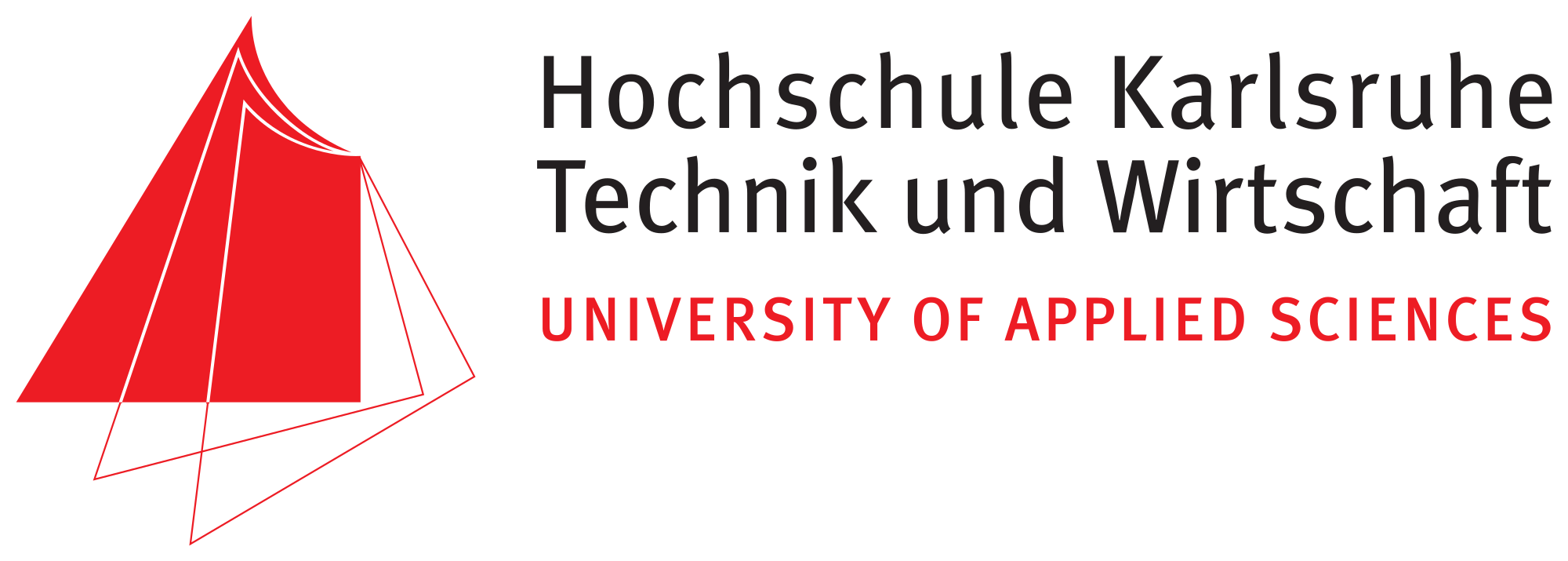Nowadays, home automation technology is constantly improving its flexibility and updating its features to satisfy the needs of people today.
In the
existing home automation system, there are some product which is existed in the market and have different types of wireless deployments.
There are a few types of control for the smart home products such as cloud-based control, local control, router-controller based control, and others.
The existing product have been divided into a few categories according to its type of communication and its function.
(a) Home Appliances Voice Control -
(i)
Google Home Assistant :
It can control over all home devices including TVs, lights, applliances, plugs, thermostats and more using Google Home.
The signal lights above the Google Home Assistant will show user whether it is listening or not when user say :
"Ok Google".
It will connect to its Google Assistant cloud for manage the command of Google Home. It is also compatible for
cloud of Apple HomeKit and Amazon Alexa.
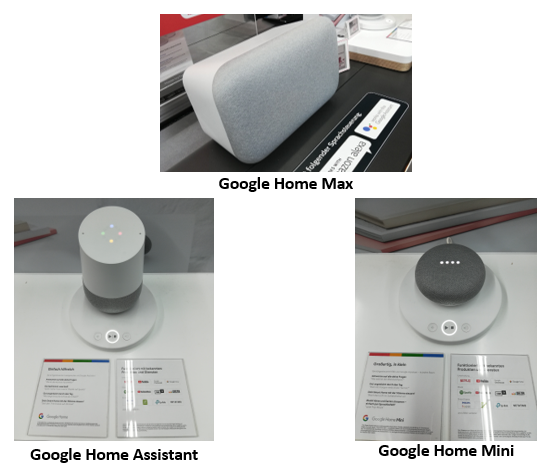
Figure 2.3.1 : Google Home Assistant
(ii)
Amazon Alexa - Echo :
User can use Alexa to control smart devices such as Cameras, door locks, entertainment systems, lighting, and thermostats.
User can either connect device control cloud to Alexa with Smart Home Skill API, using Zigbee to connect locally, or connect directly using Amazon-managed hardware module and cloud service which provided with the Alexa Connect Kit.
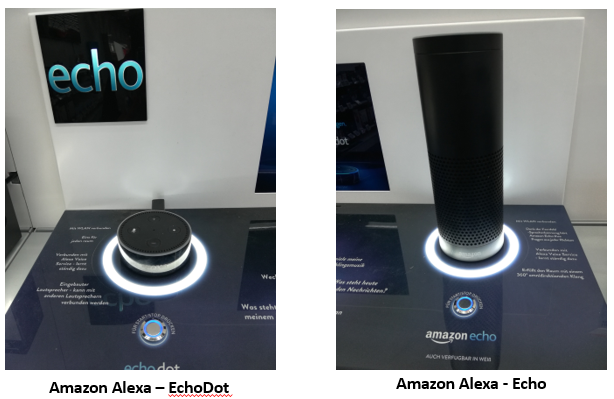
Figure 2.3.2 : Amazon Alexa Echo
Google Home Assistant vs Amazon Alexa-Echo:
Both are always listening via their built-in microphones that can hear voice input from a moderate distance.
The Echo wakes up with the command "Alexa" or user can change to their own command whereas Google Home will listen for either "Ok Google" or " Hey Google".
Both product can work with other smart home devices such as Nest, Honeywell, SmartThings, Philips Hue, and others.
(b) Climate Control Automation -
(i)
Dyson Pure Hot + Cool Link :
It can remove pollutants from air and be an air cooler or air heater.
User can monitor through "Dyson Link App" and see the live air quality metrics. The system will react to the indoor air quality.
Its "Dyson Link App" will connect to the "Dyson Cloud" to get the data of air quality.
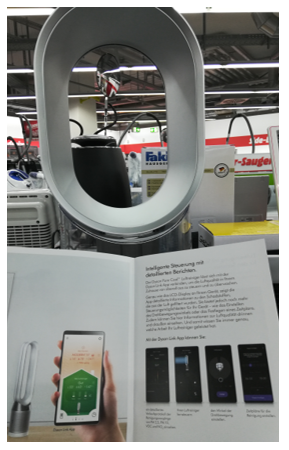
Figure 2.3.3 : Dyson Pure Hot + Cool Link
(ii)
Tado° Smart Thermostat :
The tado° Smart Thermostat uses user phones' location to control the heating process of the thermostat to ensure no energy is wasted. User can control the thermostat by schedules in the app too. This system has several integration possibilities, such as Apple HomeKit, Amazon Alexa Echo, Google Home and IFTTT.
It compatible to these clouds.
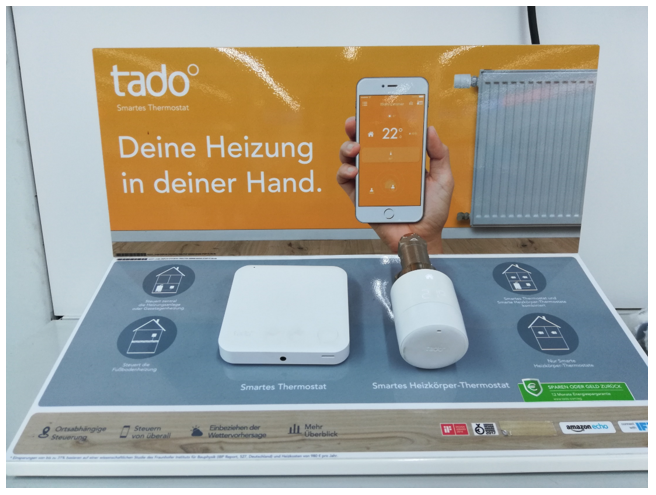
Figure 2.3.4 : Tado° Smart Thermostat
(c) Home Security Automation-
(i) Door Access Control -
Ring Doorbell :
It can allow user to hear and speak to guests from smartphones, tablets or PC. This system will require the Internet connectivity to connect and send push notifications to user's device.
By connecting to Ring's cloud, it ensures the doorbell can manage the data and can reach user's smartphone and tablet whether they are at home or away. It also can use Amazon Alexa to control it.
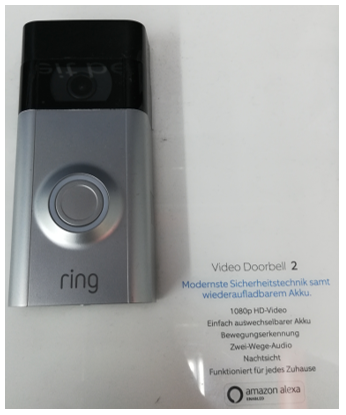
Figure 2.3.5 : Ring Doorbell
(ii) Fire Alarm Automation -
HomematicIP Smoke Alarm :
It is a smoke and carbon dioxide detection and can inform user directly via apps. It is compatible to the clouds such as Google Home and Amazon Alexa. With this product, it will also have an access point modem to connect user to its system.
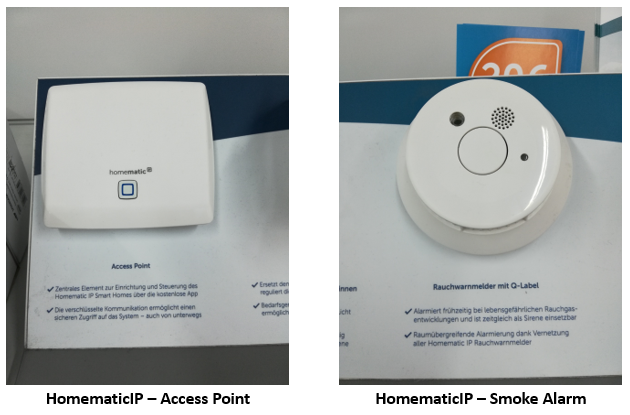
Figure 2.3.6 : HomematicIP Smoke Alarm
(d) Kitchen Appliances Automation-
(i) Bosch
Home Connect Refrigirator :
It can control temperature and let user knows the contents in refrigerator through "Home Connect" apps.
(ii) Bosch
Home Connect Oven :
User can control settings of oven according to food recipe in the "Home Connect" database.
(iii) Bosch
Home Connect Coffee Maker Machine :
User can choose favourite coffee or set an appointment to make coffee by using "Home Connect" apps.
(iv) Bosch
Home Connect Cooker Hob and Cooker Hood :
User can check the condition of filter from "Home Connect" apps.
(v) Bosch
Home Connect Dishwasher :
User can get the information of their plate washing process through "Home Connect" apps.
(e) Laundry Appliances Automation-
(i) Bosch
Home Connect Washing Machine :
User can control the program of washing machine via "Home Connect" apps.
(ii) Bosch
Home Connect Dryer :
User can control the dryer via "Home Connect" apps.
(f) MyFritz! -
(i) MyFritz! - Fritz!Dect 301 :
With the MyFritz!App, it's also a cloud control which easier for the user to control their smart home devices such as Fritz!Dect 301.
Fritz!Dect301 is a digital enhanced cordless telecommunication (DECT) device which has a smart radiator controller for the home network. It can automatically and accurately controls the room temperature and save the energy.
However, it is also a local control when it need to be
controlled by Browser.
Apart from cloud server control, there are also some devices which do not need cloud control to operate. It can connect the devices via IP address or Wi-Fi. The local control will always have faster response to the devices.
Furthermore, user can also use Z-Wave or Zigbee to enable it to connect to their devices for total local access.
